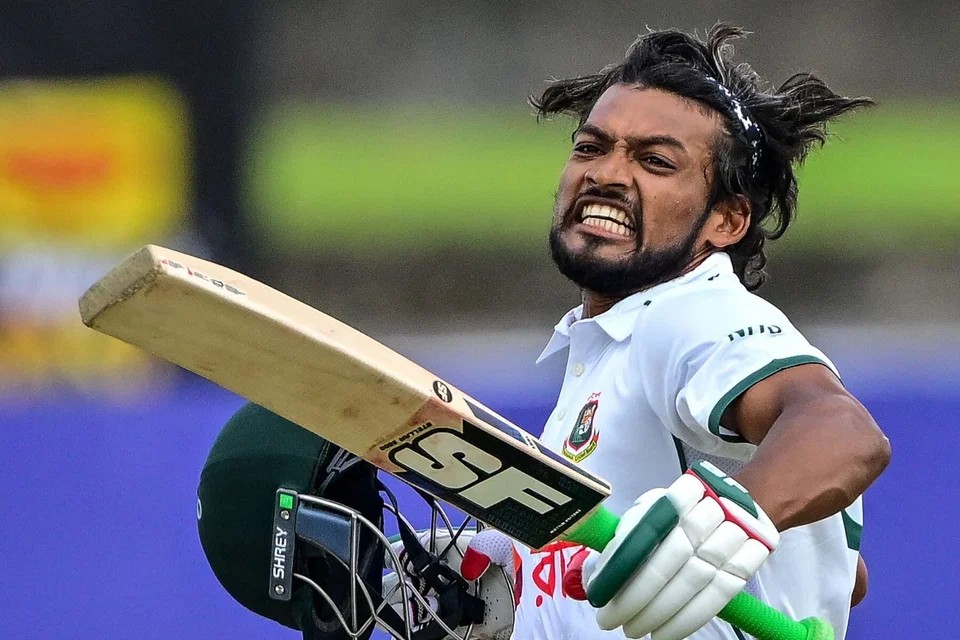For weeks, the question lingered across Bangladesh’s cricketing circles: Would Najmul Hossain Shanto return to lead the Test side? The uncertainty deepened after the left-hander initially declined the Bangladesh Cricket Board’s (BCB) request to reassume the role, even after cricket operations chairman Nazmul Abedin held a lengthy discussion with him following the ODI series against West Indies in Mirpur.
But something changed. And it didn’t happen overnight.
Shanto’s hesitation stemmed from more than just cricketing considerations. Those close to him say he worried that accepting the captaincy again might be perceived as opportunistic, especially given the criticism he has faced from certain media corners for his direct, unfiltered manner. Yet, beneath the surface of perception and personality, the numbers told another story: Shanto is Bangladesh’s most successful Test captain to date.
His Test leadership record reads four wins, one draw and nine losses in 14 matches, a win percentage of 28.57%, ahead of Shakib Al Hasan (21.05%) and Mushfiqur Rahim (20.58%). Under him, Bangladesh showed signs of a clearer tactical identity in red-ball cricket. And then, surprisingly, he stepped down earlier this year after the home series against Sri Lanka.
The Meeting That Shifted the Momentum
On October 28, BCB president Aminul Islam called an unscheduled meeting at a Dhaka hotel, attended by cricket operations representatives and senior cricket figures, including Faruque Ahmed, Abdur Razzak, and Khaled Mashud. The focus: finding a solution before the November 11 Test series against Ireland.
Nazmul Abedin informed the room that Shanto had already refused one request to reconsider. Time was running out. What followed was critical. Faruque Ahmed, who in the past had convinced Shanto to continue during a previous leadership pause, asked for 24 hours to speak with him privately.
His conversation proved decisive. According to BCB insiders, Faruque appealed to Shanto from a position of shared experience. He reminded him how leadership journeys come with setbacks and that what matters is not the turbulence, but the return.
“Faruque bhai reminded him to look ahead, not behind,” a BCB official confirmed. “He showed how he himself had been pushed out, then returned, and is now contributing again. That perspective changed a lot for Shanto.”
The message struck closer to home because Faruque’s own path had been bruised by political turbulence within the board. Yet, he had returned — now as a vice-president and was committed to stabilizing Bangladesh cricket’s leadership landscape.
The Real Wound: The ODI Captaincy Episode
When Shanto stepped down from the Test captaincy in June, many linked it to how he lost the ODI captaincy earlier in the year, just before the Sri Lanka tour. The timing, abrupt and ill-communicated, left him feeling blindsided. The captaincy was handed to Mehidy Hasan, and Shanto was left hurt.
There was no dispute among teammates they supported him. The disappointment was with how the decision was executed. Even BCB president Aminul Islam, while defending the process as collective, later admitted it should have been handled better.
“I don’t have the authority to remove a captain alone,” Aminul said. “It was a board decision. But yes, the situation could have been managed more respectfully.” This time, the board seemed intent on correcting those mistakes.
A Shadow Committee and a Rebuilt Trust
Aminul’s new “shadow committee,” informal but influential, has been quietly working in the background to ensure greater accountability and player management stability. The decision to re-engage Shanto through those he trusts, instead of through formal directives, reflected a shift in approach.
This time, the board didn’t tell Shanto to lead. It asked and listened. Shanto agreed, not because he had no choice, but because he finally felt he had support behind him to lead the team forward.
What Comes Next
Shanto’s return does not erase the challenges ahead. Bangladesh cricket remains in a transitional phase, with expectations rising and results still inconsistent. But his reinstatement provides something that had been missing for months: continuity.
For the Test side, that stability matters more than ever. The story, ultimately, is not of a captain forced back into position but of a player who needed reassurance that leadership would not be a lonely place. And this time, he received it.

